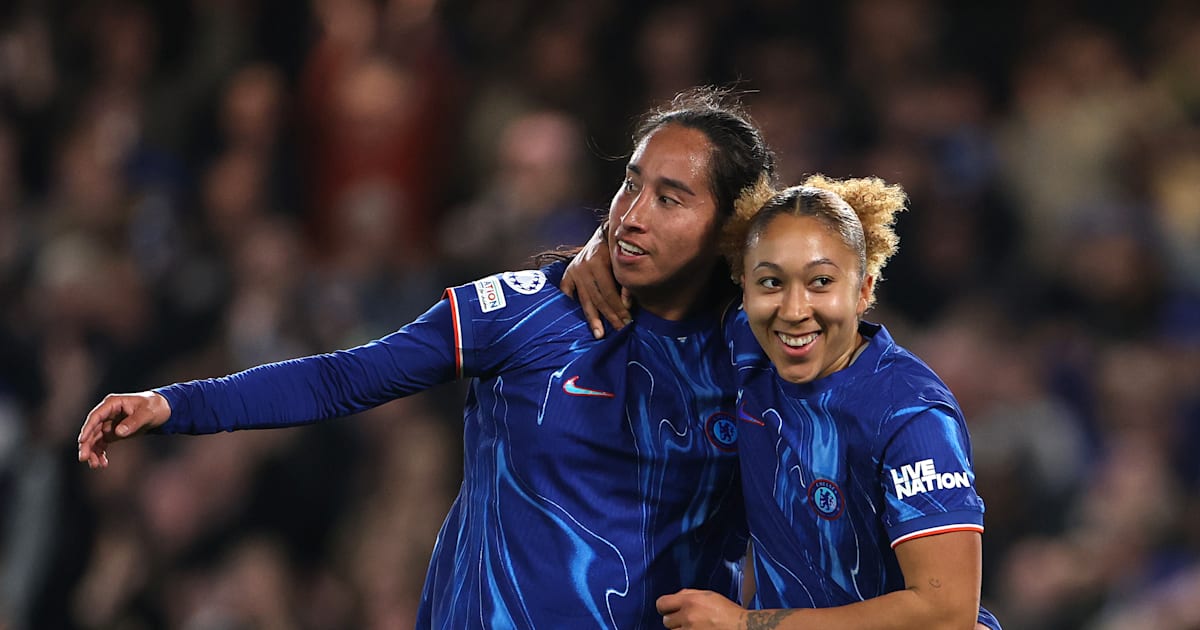Maurice Brosnan: Eight observations from the Gaelic football championship

Every year, RTÉ creates a Google Drive with all their championship match footage and distributes it among intercounty teams. Dublin’s win over Wicklow is there, a single camera with no commentary to capture an expected outcome.Every week for this column, I select a handful of games and go to work. Keep track of some generic stats, tag a couple of key events, note who is playing well and consider why. Few stakeholders in the association are as willing to share as analysts are. Performance analysis can be tedious work, everyone concerned appreciates the need to make it as painless as possible.That means we can access footage from the vast majority of intercounty games, broadcast or not. Real, raw, the clangour of a bustling game and nothing else. Usually, a pleasure.In the first half, as a spirited Wicklow continued to put it up to the Leinster champions, the resonant sounds of the terraces were interrupted by a sole voice close to camera. This individual had an issue with Wicklow boss Oisín McConville.The Armagh All-Ireland winner is also the best-known recovering gambler in Ireland. He chose that position, purely because it allows him to help many others in the process. After the release of his book, The Gambler, McConville did a counselling diploma, got involved in the GamblingCare.ie charity and continues to be a go-to confidant for countless men who are in search of some help.Anyone who spends any time in a crowd on a championship day knows that hysteria is to be expected.Even level-headed supporters get carried away. That can occasionally descend into disgrace. This is nothing new.Still, there was something galling about this snippet to realise that on top of trying to manufacture a seismic shock, McConville had to contend with being subjected to such pathetic abuse.As it happens, this baying individual was eventually silenced when someone nearby condemned the “language.” Precisely how it should be. Half-time came and for the entire second half, the soundtrack returned to sounds of summer.For too long, we as a GAA community tolerated too much. Violence on the pitch and abuse of players, managers or match officials, is all part of a culture that must change. “The heat of the moment” or “an isolated incident” is no excuse.And while the association can - and is - trying to tackle the issue, the best possible resolution is collective responsibility. In the safety of a crowd, abusers find comfort. Credit to whoever spoke up in Echelon Park and made it clear we won’t accept it.Here are eight observations from the Gaelic football championship.Connellan loss cripples WestmeathThe new rules mean kickouts dictate so much in a game. In Cedral St Conleth’s Park last Saturday, Kildare were down at half-time having won just seven of their 17 kickouts. In the second half, they won 10 of 13.Ray Connellan was the best player on the pitch in that first half. He had 11 possessions, one assist, two shots and one point. The midfielder won two kickouts clean and broke six kickouts on either side, although Westmeath did not retain all six.A hamstring injury forced Connellan to come off with Brian Guerin taking his place. Not only did Westmeath’s press suffer, their own kickout retention took a significant dip in the second half too.“The defining moment,” said Dermot McCabe of Connellan’s departure. “Ray was lording the skies. We probably should have been further ahead at half-time.”Black card choicesFamously, on All-Ireland final day, Jim Gavin’s Dublin had a plan in place in case there was a replay. The players outside the match-day squad training in the morning. A message was pre-prepared for players’ families to rearrange the post-match banquet. They strived to plan for every scenario.Ever since Gavin’s Football Review Committee (FRC) adjusted the black card rule, with teams now having to maintain the three-up even if reduced to 14, the punishment is now much more severe. On Saturday, Armagh were hit with a triple blow. Not only did they receive a black card, it was for their goalkeeper Ethan Rafferty. And Antrim had a penalty.By accident or design, Armagh took their time making a substitution, forcing Kavan Keenen to delay over his spot kick. Eventually Blaine Hughes came on and saved it. Hughes replaced Tiernan Kelly. On the 30 minute mark, Armagh had a tough call to make. Do they burn another sub and bring Kelly back on for Blaine Hughes? Instead they opted to wait.Rafferty returned and played out the remainder of the half as an outfielder. At the turnaround, Armagh were one point down having kicked one wide and four short or saved.They needed another shooter. Oisin O’Neill was introduced instead of Hughes, with Rafferty returning to the net. He assisted 0-2 and kicked 0-6, including three two-point frees, as the All-Ireland champions cruised into an Ulster semi-final.Armagh’s depthSpeaking of pleasing aspects for Kieran McGeeney, Tomás McCormack, Calum O'Neill, Gareth Murphy and Darragh McMullan all made their championship debuts for Armagh last weekend. Crossmaglen defender James Morgan was a late addition to the squad.Kieran McGeeney now has depth across his squad. Below is a table of players who have played championship minutes. It should be noted that there are several talented Armagh panellists who haven’t played championship yet and several players listed here who can operate in more than one line.Armagh depth.Dessie’s cause for concernIn the three years post-Covid championship (2022, 2023, 2024) only one team outshot Dublin: Galway. Last season’s championship exit was a rarity. Until Wicklow came astonishingly close to doing it again.Wicklow actually had more phases with shots, 27 versus 26. Dublin’s total shot tally was higher when you factor in rebounds. Sean Bugler had a goal chance well saved by Mark Jackson. He also saved Con O’Callaghan’s penalty, but was powerless to stop his follow-up.At their best, Dublin’s ability to control a game was unrivalled. So much of that stemmed from their restarts. Stephen Cluxton would get a kickout off, even if it was short, and they would control the ball until they had worked a scoring opportunity. Not anymore.Hugh O’Sullivan is the fourth Dublin goalkeeper to start a game in 2025. Their kickout retention was just 54%. A rotating cast of goalkeepers and midfield options is another factor that might inhibit their development of an effective kickout plan under the new rules.Wicklow’s approach deserves credit too. Dean Healy was immense in the middle. Con O’Callaghan’s 1-7 drew headlines but Malachy Stone gave a fine account of himself, forcing several turnovers. O’Callaghan’s return from play was 0-4.The home side were noticeably disciplined throughout. Paddy Small came on after 50 minutes and it was his direct running that produced Dublin’s first scored free five minutes later.For Farrell, there will be some solace in how their front six is starting to take shape. Niall Scully was outstanding, creating six points and scoring 1-1. Their conversion was superb. With steady supply, they have the ability to rack up enormous totals.Wicklow will rue six missed scoreable frees of their own. They did make the most of two-pointers, kicking four. Dublin meanwhile, had just one before their final score of the day. Captain O’Callaghan stood over a 45, only to chip it short and collect back. A one-point opportunity was suddenly two. He slotted it.Where are the Tyrone crowd?As pointed out by Anglo Celt Sports Editor Paul Fitzpatrick (@moefitpatrick) on X, the attendance at the Ulster quarter-final clash between Tyrone and Cavan was just 6,791. The same fixture last year drew 9,950. 20 years ago, they attracted 25,094 for an Ulster semi.Crowd sizes are complex. There are several influential factors at play here. However, Tyrone’s support has been dwindling for a number of years after the 2021 success. Speaking post-match, midfielder Conn Kilpatrick directly addressed the fact that players are now pushing for supporters to turn out in interviews. They have to, it provides an enormous lift.“I know it’s easy to sit in the house and watch it on TV and not everybody can get to the games but as players, we would love it to be 90 percent Tyrone fans here and 10 percent Cavan – but hopefully the crowd will come out the next day for Tyrone and Armagh.”Kickout warsOne of the most interesting inclusions in the latest FRC report was a graph produced by the Games Intelligence Unit. This year, the GIU are tracking every single game. They recently provided a kickout map for every division.Kick-out data.It is striking to note that despite the new rule ensuring kickouts must travel beyond the 40m arc, there is still a decent portion of kickouts going short. This was particularly noticeable in Division 4.In the old game, there was a reliable relationship between kickout length and division. Top teams tended to go short the most. Division 4 opted for it the least. Has that flipped?Behind every stat there is a story. This year teams in Division 4 still opted to concede the kickout on occasion. Plus, pressing strategies aren’t as developed there, ensuring teams can go short. The league with the highest retention in 2025 was D4.Will the proportion of short kickouts increase as the weather improves? Should it? Tyrone manager Malachy O’Rourke is one of several figures who have argued that a removal of the kickout arc would improve the game. The three-up and the removal of the back pass ensure it would lead to more high pressing. Attracting more bodies close to goal would create space in the middle for cleaner contests. It will be worth watching out for what the GIU continue to produce.Shooters shootPer GAA Insights database, Westmeath’s Luke Loughlin had 32 shots across for 1-24 from play. The arc has a considerable impact on that. 14 of that tally came from two-pointers. Without the arc, does 1-17 from 32 shots sound as impressive? Does a forward take as many shots without it?His overall total for the year is at 1-57 after 11 points against Kildare, 0-8 from play.“You back your ability. Once you start hitting points, you get into a flow,” he told Tommy Rooney of Off The Ball in a brilliant post-match interview.“Sure, it might sound crazy - if you miss, you miss. Just get on with it.”The tollThe most recent update from the FRC included the first report on the physical running demands that came with the new enhancements. Mark Roantree of DCU presented the data and revealed there hasn’t been a significant physical cost from the rules so far.“We didn’t have a huge sample, so that has to be said up front,” he said. “We didn’t get a great engagement with the teams, so we had to do our data with clubs across three divisions, Divisions 2, 3, and 4, which is what we got.“We only had a total of 40 games altogether, but at least we were able to put something together to begin with. So, the headline, I guess, is nothing much has changed in terms of physical demands on players. If we look at 2024 and 2025, it is much of a muchness.”The FRC have engaged with sport scientists in a bid to encourage more teams to share their GPS data. Jim Gavin has stressed that the data is anonymised and that he understands as a former manager why everybody could need time to get comfortable with the operation.“I think it is interesting even with the very small sample size used, we can still get an insight that relatively speaking, the games demands haven’t increased,” said Gavin.“That probably speaks to, managers haven’t been talking about it which probably indicates they are seeing the same thing as well.“But it would be great for this work and the long-term benefit of the association and the Games Intelligence Unit if it is there for the long-term, that it would just become the norm that this data is shared. Like it is on the side of the performance data, there is a great network there of sharing information.”A fair point, but this is a complicated process. Many sport scientists will have pre-existing research agreements around their data. Gavin had previously mentioned Dr Niall Moyna, Professor of Clinical Exercise Physiology at DCU, as being involved. Moyna is also a coach and selector of Louth.Might that be a factor in why some outfits are hesitant to share data until they show how it was going to be utilised?Those teams will now be able to see the integrity and effort that has gone in to create valid and reliable results. The report, which is available to everyone, also did not list Niall Moyna by name. Instead Uttaran Bera, Aaron O’Neill & Prof. Roantree were registered.A final note. With every FRC update, the scale of what they are trying to navigate becomes more intricate. It must be exhausting. Progress requires persistence.




.jpg)





